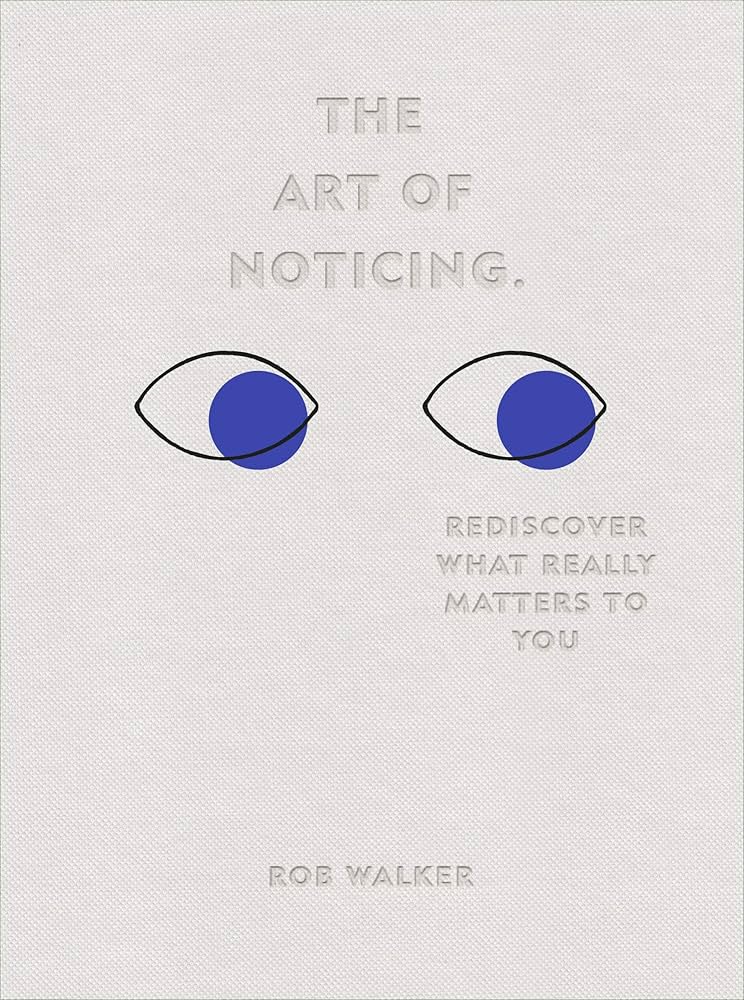Welcome back to 52 Weeks of Marketing Wisdom where we showcase, review and encourage people to discover 52 books under five key themes; Foresight, Customer, Strategy, Creativity & Innovation. Plus two "wild cards" to take us up to the magic number 52.
Each week we will review a book, provide a summary of why we think it's a good read for anyone in Marketing and some quotes to get you in the zone.
They range from business/marketing classics to hot off the press debuts and everything in between.
Don't panic. You're not meant to read a book a week, but hopefully get a weekly recommendation, so when you do, it's going to hit the spot.
Our programme is aimed at busy marketing professionals in-house and agency side who want to be inspired, learn and grow through reading.
The first theme we are exploring is Foresight and we're kicking off with three books that encourage you to hone your observational skills. This week, we're looking at the idea of Sense-making as pioneered by the wonderful Christian Madsbjerg.
So, pay attention, buckle-up and enjoy the ride.
Week Two: Look: How to Pay Attention in a Distracted World by Christian Madsbjerg.
Channels: Foresight/Creativity/Strategy
In "Look: How to Pay Attention in a Distracted World," Christian Madsbjerg, a business strategist and co-founder of ReD Associates, combines insights from philosophy, anthropology, and business to advocate for "sensemaking" — a method of interpreting the world through careful, deliberate attention to its cultural, social, and contextual nuances.
At the heart of "Look" is the concept of sensemaking, which Madsbjerg defines as understanding the complexities of human behaviour by interpreting the often-hidden patterns and cultural contexts that shape it. Unlike data-driven approaches that focus solely on numbers, sensemaking requires looking closely and deeply at people, their environments, and their actions.
Examples of Sensemaking in Action
Madsbjerg uses several compelling examples from his work to illustrate the power of sensemaking. For instance, when his consultancy, ReD Associates, was hired by Ford Motor Company, they sent anthropologists and social scientists to observe people in different cultural settings, such as urban China and rural America. They discovered that cars were being used not just for transportation but also as mobile living spaces where people could work, eat, or rest. This insight helped Ford rethink its vehicle designs to better reflect the changing ways people use cars.
Another example comes from Madsbjerg’s work with a healthcare client seeking to improve care for elderly patients. Instead of relying solely on clinical data, his team spent time in the homes of elderly patients, observing their daily routines and listening to their concerns. They noticed that many patients were confused by medical jargon and overwhelmed by the complexity of their medications. By understanding these emotional and practical challenges, the healthcare provider was able to design more user-friendly services and communication strategies, significantly improving patient satisfaction and adherence.
At Selbey Labs we use very similar techniques and a mix of data and human-centred learning with equally successful results, so we know that they work.
In "Look," Madsbjerg examines how the constant bombardment of information in the digital age has eroded our ability to focus and observe. He calls for a conscious effort to reclaim the art of looking by slowing down, asking meaningful questions, and engaging more fully with the world around us.
Empathy Through Observation
A recurring theme in the book is that observing deeply is also a way to build empathy. By paying attention to others' perspectives and truly seeing their experiences, we can connect more genuinely and solve problems that matter.
Blending Data with Human Insights
While Madsbjerg does not dismiss the value of data, he advocates for combining quantitative analysis with qualitative research methods, such as ethnography and direct observation. He believes this blended approach offers a more comprehensive understanding of complex problems, allowing organizations to make decisions based on a fuller picture of reality.
And finally, a few quotes from the book to whet your appetite.
On Sensemaking:
"Sensemaking is not about numbers or data; it’s about seeing, interpreting, and understanding the deep and often hidden patterns that shape human behavior."
On the Importance of Humanities:
"The humanities teach us to look at the world with fresh eyes, to interpret human behaviour, and to find meaning in the subtleties of everyday life. They are more relevant now than ever."
On the Role of Empathy:
"Empathy starts with looking closely, with setting aside your assumptions and judgments, and simply observing what is happening around you."
On Combining Data with Human Insights:
"Data can tell you what is happening, but it cannot tell you why. To understand the why, you must look beyond the numbers and into the hearts and minds of people."
On the Value of Qualitative Research:
"Qualitative research is not about finding the average; it is about finding the anomalies, the details that data alone would miss, and the stories that reveal the true nature of a problem."
On Observing in Business:
"In business, the companies that succeed are often the ones that notice what others overlook. They are the ones that see customers not as data points, but as people with needs, desires, and dreams."
Look, How To Pay Attention in a Distracted World, Christian Madsbjerg

